Historical heritage balanced with current zeitgeist
Makeover will make Utrecht University Hall more inclusive

The hall is Utrecht University's ceremonial heart. That's where students receive their diplomas and PhD candidates defend their theses. The stately corridors, the gothic ceiling, and the Senate Hall, filled with portraits of former professors, exude history. Even so, some students and staff don’t feel at home there.
In 2022, the Beadle (the university’s master of ceremonies) was notified that the building wasn’t representative of the university community. The university, and society at large, are more diverse than what’s on display at Utrecht University Hall. In other words, there were too many depictions of white, predominantly older, men. This motivated Rector Henk Kummeling to start a project to ensure everyone felt welcome at the University Hall.
A dedicated team got to work on three places inside the building. The main question they were supposed to answer, was: how to make a historical space inclusive for all people regardless of background, convictions and preferences, without erasing its history?
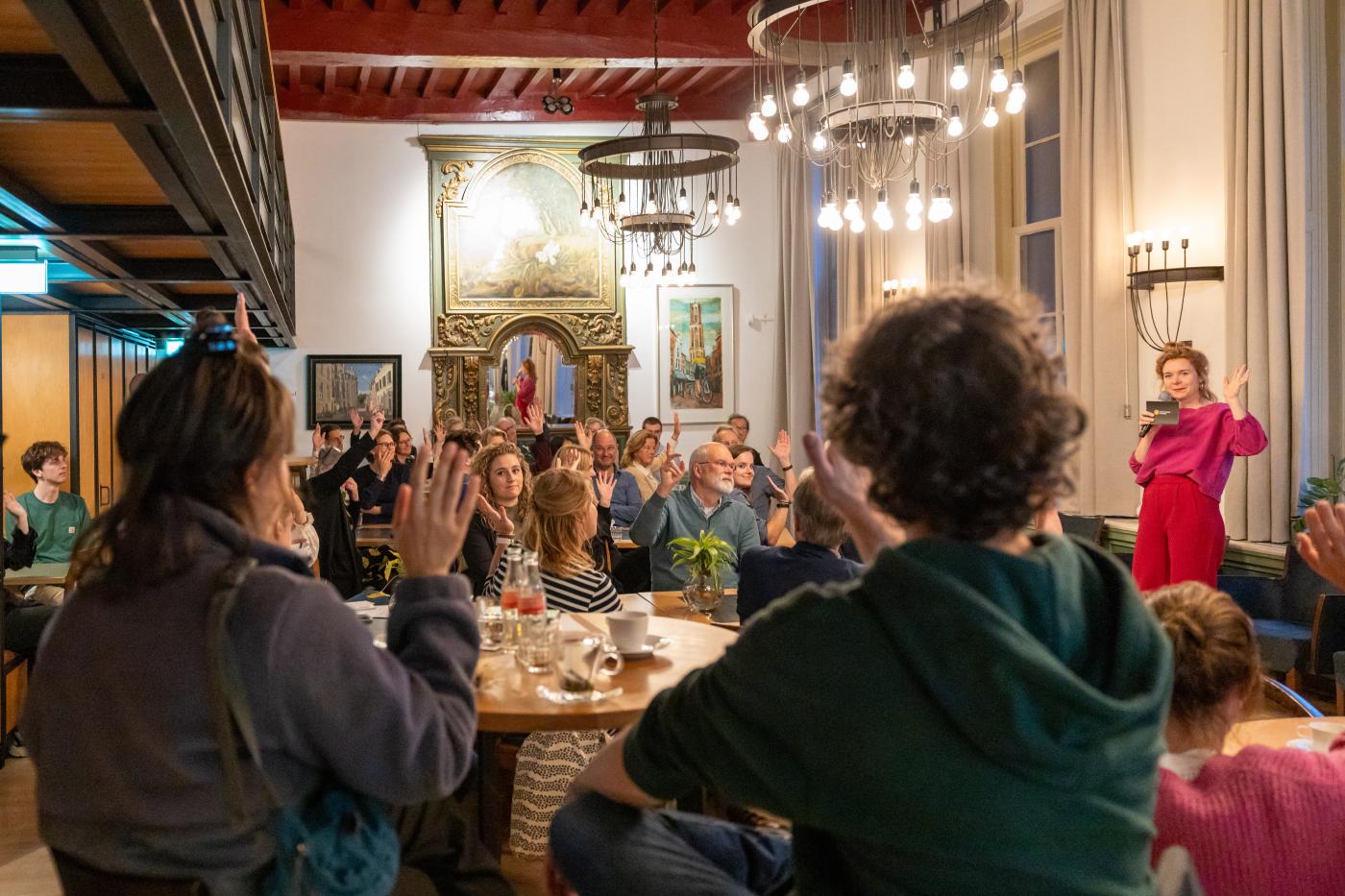
Raise your hand if you feel welcome at Utrecht University Hall. Photo: Dick Boetekees.
Dimensions of (in)equality
The Belle van Zuylen Hall has undergone one of the most drastic changes. The exhibition Dimensions of (in)equality replaced the portraits of male professors that once dominated the walls. Now, portraits of students and staff adorn the walls. They’re all different from each other in terms of ethnic and socioeconomic background, gender identity, and able-bodiedness. Each portrait has a QR code that reveals more about the personal stories of these students and staff members. “The interviews demonstrate that everyone’s equally important in research,” a project officer explains to us during a guided tour.
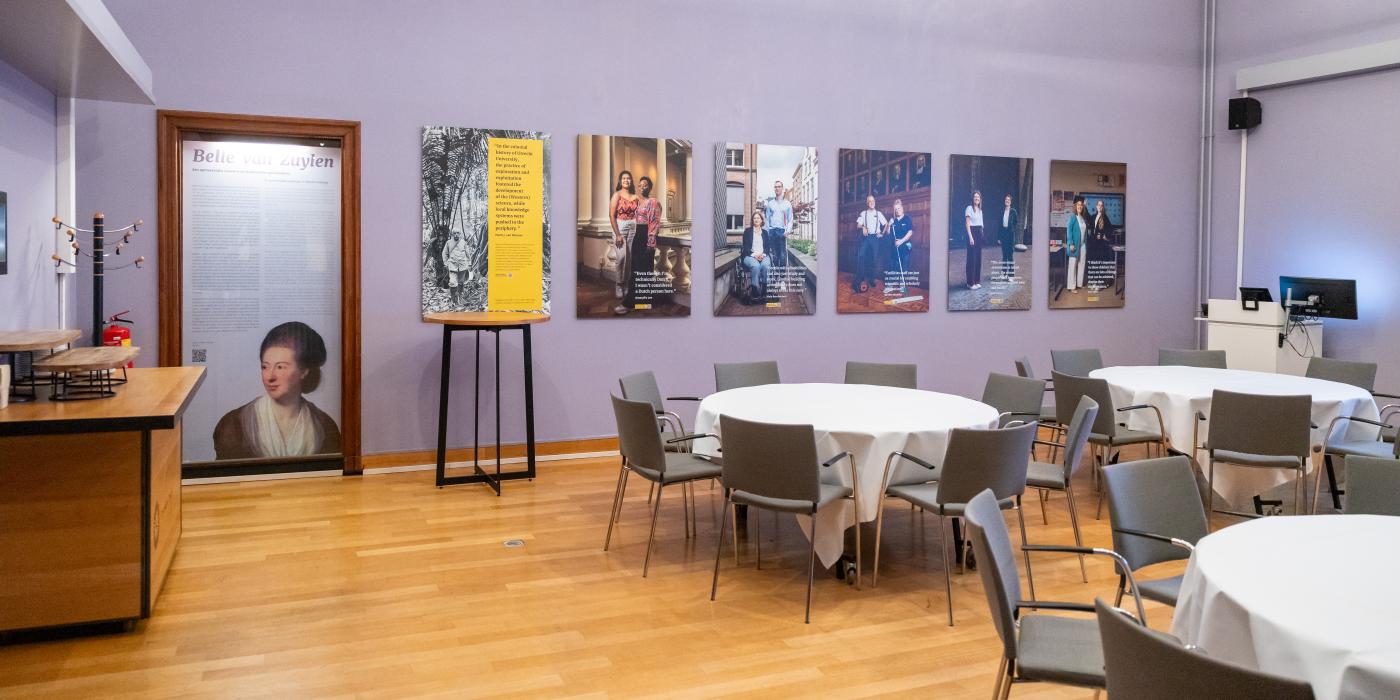
The exhibition Dimensions of (in)equality. Photo: Dick Boetekees.
One of the portraits is of Interdisciplinary Social Science lecturer Emmy Krooshof, who is bisexual and likes to emphasise the importance of visibility. She calls for more room for different identities so that people feel less isolated if they belong to a minority. “Bisexuality often remains invisible. When I’m in a relationship with a man, people think I’m straight. When I’m dating a woman, they assume I’m lesbian. Both assumptions are incorrect. This portrait makes my identity visible, in a space where traditionally only other identities could be seen.”
Attention is now also paid to the history of Belle van Zuylen, after whom the hall was named. The story of her complex life and the ties of her family to the colonial past are told in a nuanced way, addressing both her progressive ideas and the controversial aspects that surround her. The idea is that this will invite visitors to further reflect on her role in history.
Difficult heritage
Context has also been added to Paul Kruger’s statue. It used to be in the Senate Hall 20 years ago, but now it’s in a niche on the first floor. As a former president of the South African Republic, he was once praised as a leader of the Boers and was held in high esteem, including at the university. After all, many sons of Boers studied here. But Kruger is a controversial figure due to his support for segregation, apartheid politics and racial suppression. Although this statue was once donated to the university, the question is whether it still deserves a place in this community.
Historian Leen Dorsman stresses the importance of keeping it because it invites reflection: “We can’t erase our past. If we deny people like Kruger existed, we can’t learn about them.” Rector Kummeling agrees: “It’s part of our history, part of us. It’s given shape to the university as we know it today.”
People like Belle van Zuylen and Paul Kruger will therefore keep their place at Utrecht University Hall. Trainee and History alum Isabel Makkinje, who wrote the texts about Kruger and Van Zuylen, specialises in this type of controversial heritage. “We don't have immediate answers on how to deal with such figures. That’s why I’ve chosen to continue my studies by doing a Master's programme in Heritage and Museum Studies at Leiden University, so I can determine what the most appropriate approach is to this heritage on a case-by-case basis.” She agrees with the choice to keep Kruger on display but emphasises that this way, with context and reflection, is the right one.
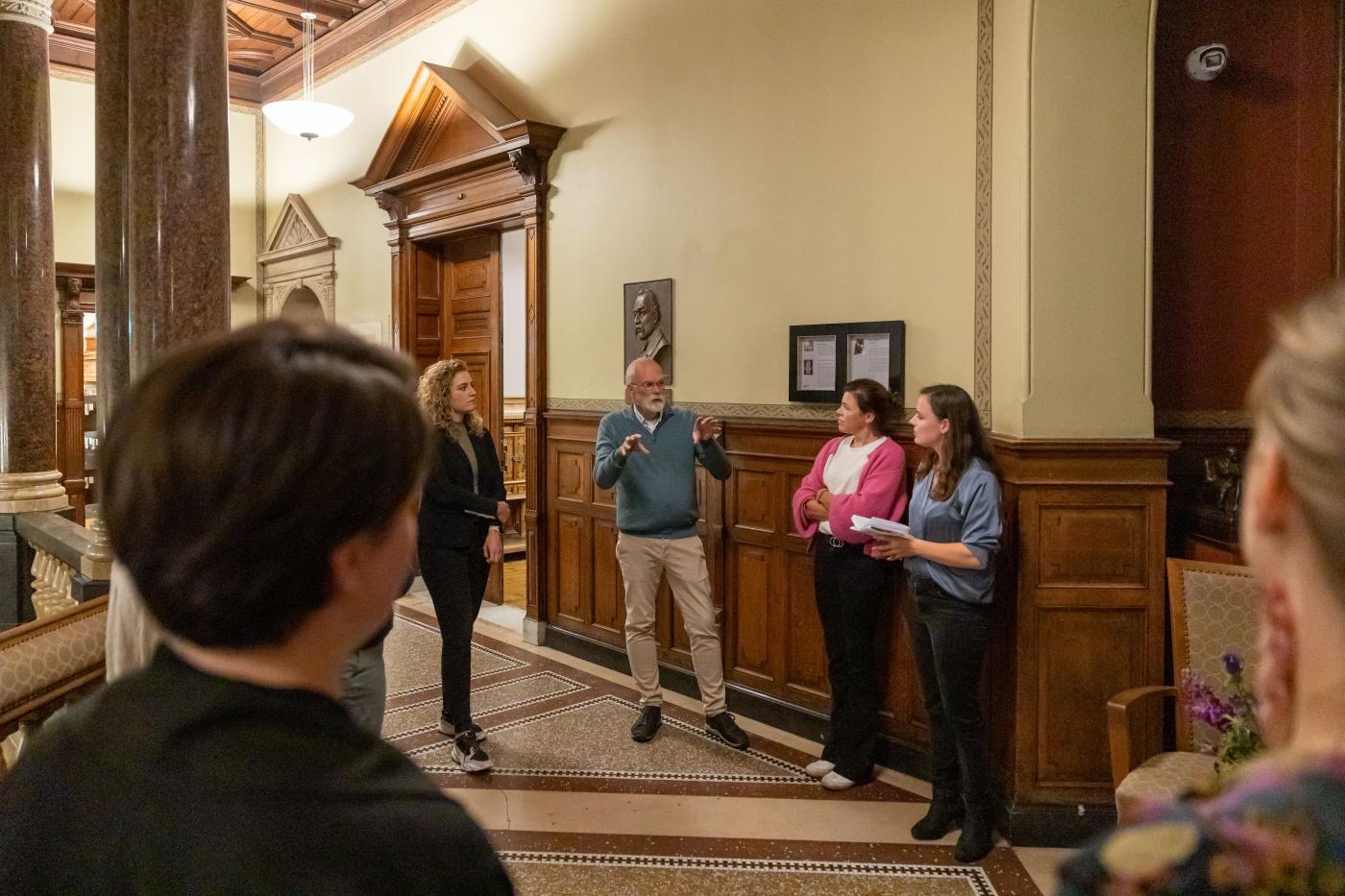
Historian Leen Dorsman next to the plaque on which the new text about Paul Kruger can be read. The statue is in the niche to the far right. Photo: Dick Boetekees.
Historical background
The Senate Hall, with the many portraits of "old white guys", has remained unchanged. These paintings are historical heritage and the emphasis here is on the feeling of humility they instil in us. “We’re standing on the shoulder of these people, building on the foundations they created,” says Kummeling.
The corridor leading to the hall has been changed, however. Before, PhD candidates would walk by the portraits of the most recent rector magnifici and some would feel scrutinised by them. These have now been moved to another wall to make room for new photos. “In the end, we’ve put up group portraits of research groups that reflect the university’s four strategic themes: Dynamics of Youth, Institutions for Open Societies, Life Sciences and Pathways to Sustainability,” we are told during the tour. The modifications serve to emphasise that research is a joint process, not an individual effort, and are therefore better aligned with diversity and collaboration at the university today.
The group photos were taken in the Senate Hall, with the research groups posing in front of the historical portraits. “It’s the story of the university as it is now, against a historical background in both a literal and figurative sense,” says project team member and architectural history alum Willem Vos.
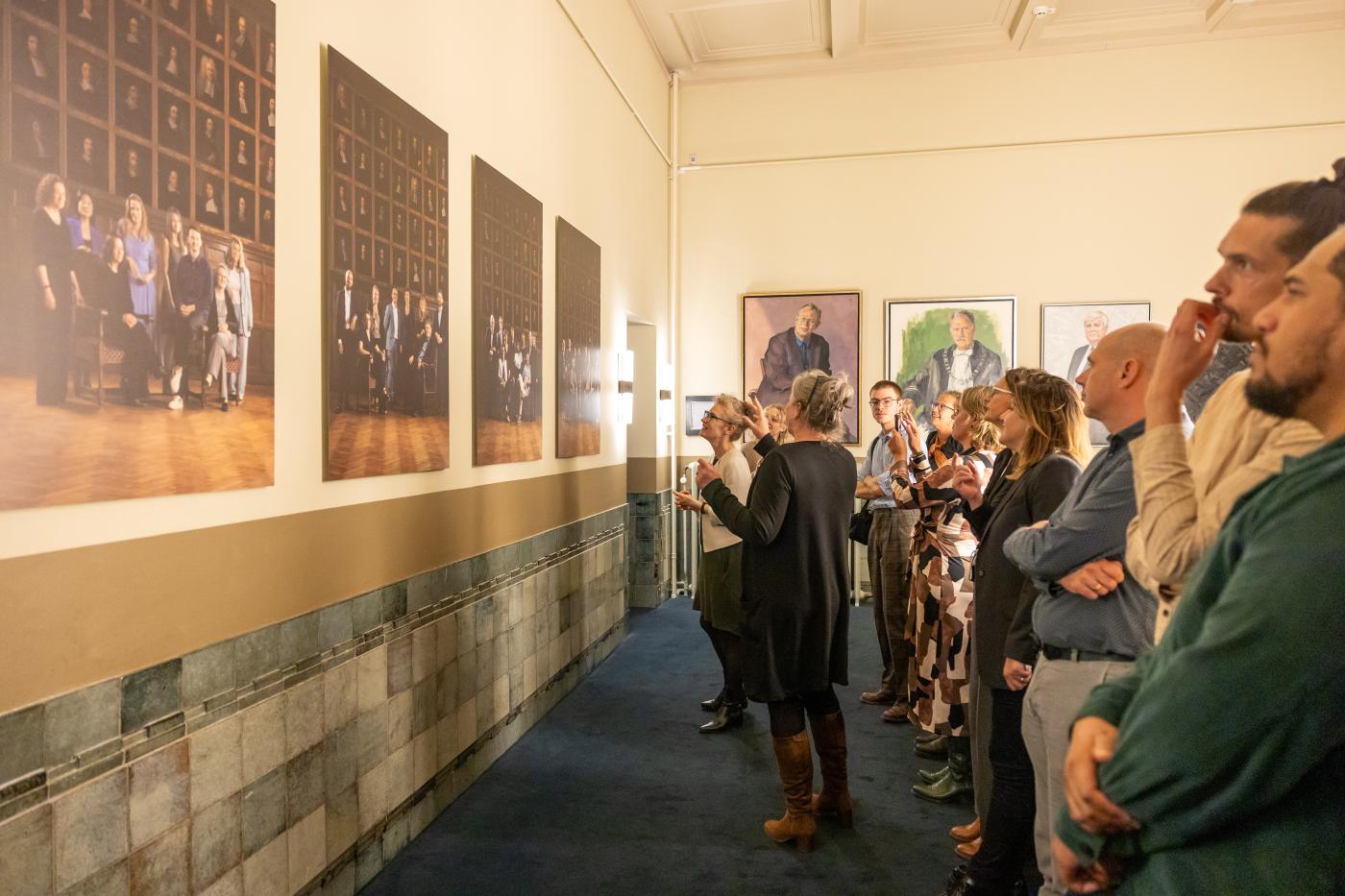
The new group portraits taken in the Senate Hall. Photo: Dick Boetekees.
Too much or too little inclusivity?
A panel, which consisted of project officers and portrayed staff, discussed the changes after the guided tour. There was a lot of enthusiasm about the execution of the project, but some critical input could also be heard.
Historian Leen Dorsman expressed his doubts about some aspects of the project. “I’m not a fan of these identity politics,” he said in the discussion. “You’re part of the university, and it’s all the same to me whether you’re gay or not. What matters to me is that you’re part of the university community, regardless of your sexual orientation. I appreciate the new exhibition and it’s good to show the university embraces diversity, but I do feel some resistance to the whole idea of identity politics."
Lecturer Krooshof, whose portrait is featured in the exhibition, voiced a somewhat different outlook: “Sadly, the reality for minorities is that their identities often remain invisible. This means it’s necessary to be visible. Otherwise, different identities, such as bisexuality, aren’t acknowledged or seen for what they really are.”

The first round of the panel discussion. From left to right: Emmy Krooshof, Willem Vos, Leen Dorsman, Henk Kummeling. Photo: Dick Boetekees.
Literal and metaphorical thresholds
Some of those present felt that the project doesn’t go far enough when it comes to inclusion. Lecturer Viola Bex-Reimert is happy with the visibility of her portrait but draws attention to the literal and metaphorical thresholds that people with physical disabilities are confronted with every day. “If we’re serious about inclusion, we also need to have a serious look at the physical space. After all, if we can’t access a space, we simply cannot be included.”
She illustrated her point by saying that she had arrived an hour early because she didn’t know whether there would be a disabled parking space available at Utrecht University Hall. It turned out to be taken, which meant she had to drive along the canals to find a spot. She pointed out such experiences don’t contribute to a sense of being welcome.
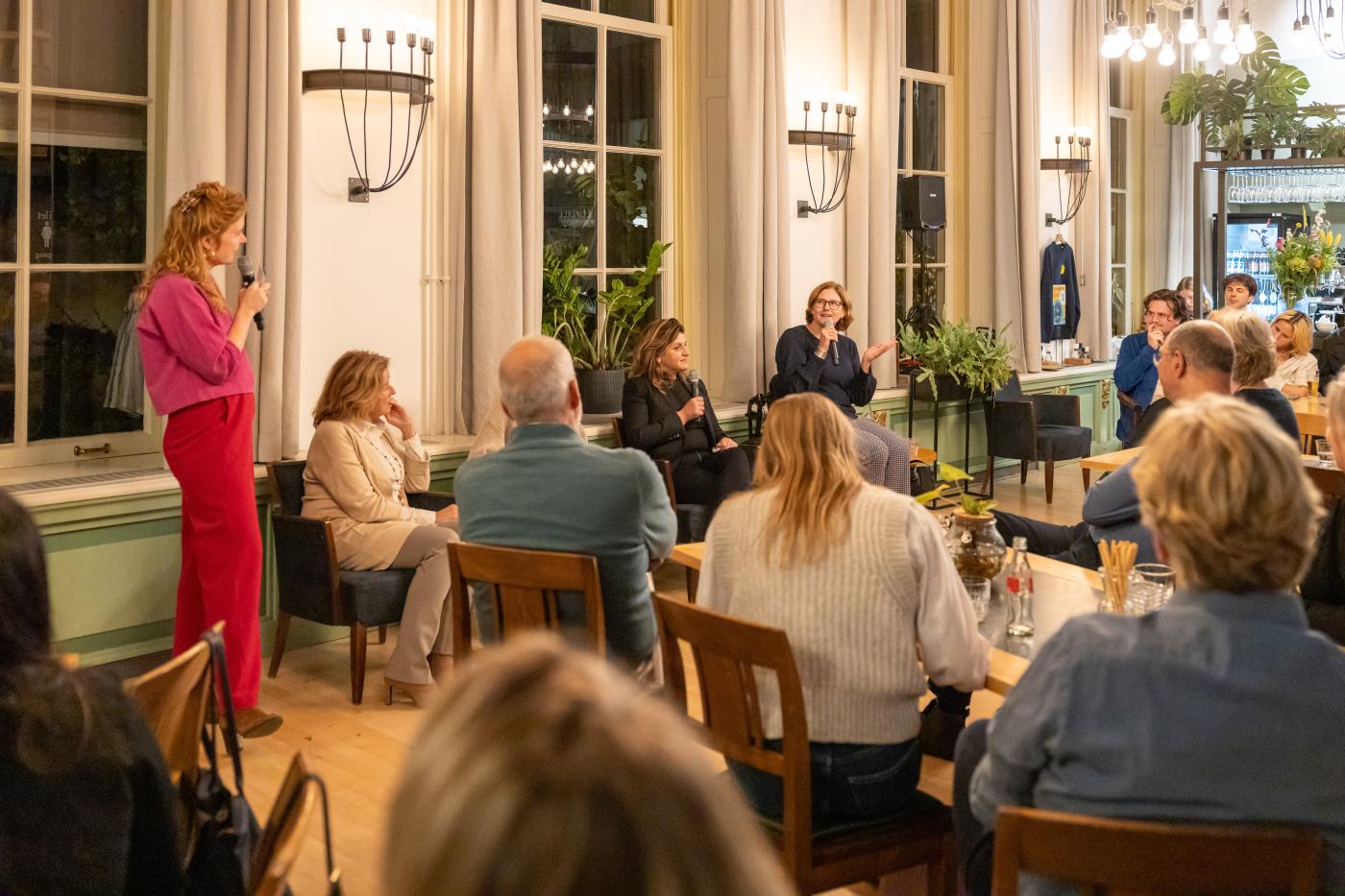
Viola Bex-Reimert talking at the panel discussion. From left to right: Reina de Raat (curator) Isabel Makkinje (lecturer), Daniela Salvatori and Viola Bex-Reimert. Photo: Dick Boetekees.
The power of images
An audience member expressed his doubts about the project, wondering whether the photos contribute to inclusion. He referred to a university magazine in South Africa, in which portraits of students from different ethnic backgrounds had been published, whereas the majority of students on campus were white. According to him, these images illustrate visual representation doesn’t always reflect reality and therefore contributes little to real inclusion or change.
Rector Kummeling refuted this criticism by explaining that the entire idea behind the project is to make minorities visible. “Images matter. They only become problematic if they don’t align with what we experience in our daily lives,” he emphasised. Kummeling asserted the project is very important, precisely because Utrecht University Hall used to lack this representation and is now trying to better reflect the diversity of the university community.
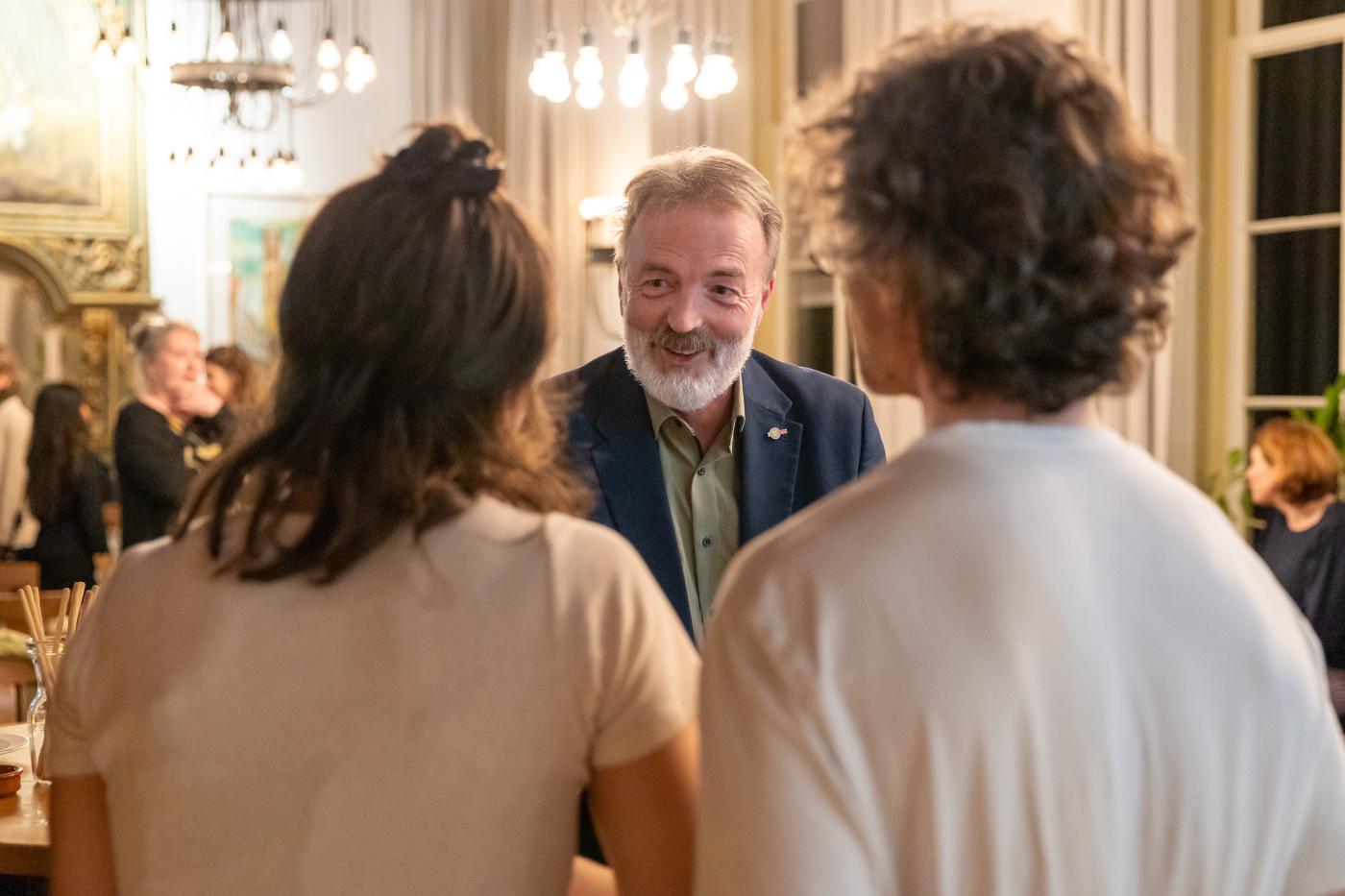
Henk Kummeling talking to the audience. Photo: Dick Boetekees.
Closed doors as the price of safety
At the end of the panel discussion, an audience member asked a question about the closed doors and security at Utrecht University Hall. “I didn’t feel welcome when I arrived just now. From a security perspective I get it, but it doesn’t gel with the openness and accessibility you’re trying to accomplish with this project.”
Rector Kummeling responded by explaining these measures are necessary. Due to the threat of occupations, the risk is too great to keep the building fully open, he said. “Openness and accessibility are important, but when there are serious risks, for example of the building being damaged, we have to take measures. We’ve seen situations where people were in danger. The extra security around Utrecht University Hall is necessary to make sure ceremonial events can go ahead as planned. I really hope we’ll be able to reinstate the building’s usual opening hours and open character soon.”